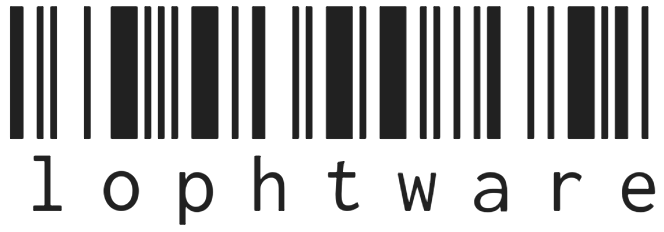lophtware

lophtware projects
I2C Behaviour
The PIC32MM0256GPM028 device allows communication over I2C as both Master and Slave, and the default firmware supplied with the USB C / PIC32 Breakout Board allows both modes of operation.
In Master mode the I2C bus will be controlled by the device, which in turn will be controlled by the Host interacting with the I2C Interface of the USB Module.
In Slave mode the I2C bus will be controlled by another device on the bus and the MCU can be accessed in a way similar to EEPROMs and sensors, but will still ultimately be controlled by the Host using the I2C Interface of the USB Module.
I2C Master Mode
In Master mode the device drives the signal lines of the I2C bus to communicate with another device, the Slave. An I2C bus uses a shared data line and so can only transmit in a half-duplex manner, ie. sending or receiving bits rather than sending and receiving simultaneously. A typical I2C transaction between a Master and Slave follows the sequence:
- Master claims the bus by sending a ‘start’ bit.
- Master sends the Slave’s unique address with a ‘write’ bit, followed by one or more bytes for the address of a register.
- Master sends another ‘start’ bit, which allows it to restart communication (in a different direction) without releasing its claim on the bus.
- Master sends the Slave’s unique address, this time with a ‘read’ bit.
- Slave sends bits to the bus for the Master to clock them in.
- Master sends a ‘stop’ bit to release its claim on the bus and allow other Masters to communicate if they wish.
The Host can initiate such a transaction by sending commands like I2C - Half-Duplex Transfer; 0-7 Bytes Out, 0+ Bytes In via the USB interface. The firmware takes care of sending the data to the relevant Slave and forwarding the reply data back to the Host.
I2C Slave Mode
In Slave mode another device on the I2C bus acts as a Master to drive the signal lines and communicate with the device. There does not need to be an enumerated USB connection or even a data-capable Host attached for this mode of operation, although if there is then it is also possible for the Host to communicate with Masters by using the device’s memory buffers as intermediate storage, ie. the I2C RAM Bank. Some details pertinent to Slave operation are given below.
Clock Stretching
The PIC32MM0256GPM028 device has hardware support for the I2C electrical / wire protocol but relies on firmware for interpreting and handling the generated events. Because of firmware overheads the device will generally not be able to respond within a single clock period, especially at faster I2C clock speeds. The I2C protocol caters for this scenario by allowing Slave devices to hold the clock line low whilst they are busy. The Master devices must recognise this condition and not try to alter the bus state during this time.
Since the factory-supplied firmware leverages clock stretching, any I2C Masters on the bus must also support clock stretching otherwise the integrity of the bus will be compromised. If Masters on the bus are not able to support clock stretching whilst addressing the PIC32 then the clock speed will need to be reduced to the point that it does not occur. This only applies to I2C transactions that are addressed to the PIC32 device.
Addressing
The default I2C bus address of the device for slave is 0x31. The device maintains an internal 16-bit address pointer which is made up of a
6-bit bank number (bbbbbb) and a 10-bit offset into the bank (aa aaaaaaaa). The address is sent in Big Endian order to keep with the established
de-facto conventions of I2C EEPROMs:
| Address MSB | Address LSB |
|---|---|
bbbbbb aa |
aaaaaaaa |
All I2C writes are preceeded by the 2-byte address, which sets the address pointer. A write that has no data bytes is allowed and serves the explicit purpose of setting the address pointer. Writes of length zero or one byte will be ignored as they have no meaning.
Each byte written to, or read from, the device will cause an increment of the address pointer. When the offset part of the address pointer reaches 1023
(0x03ff) then the next increment will cause the offset part to wrap around to 0. Reads or writes cannot occur across bank bounderies.
The memory banks provided by the slave are:
| Bank Number (Binary) | Bank Number (Decimal) | Type | Description |
|---|---|---|---|
| 000000 | 0 | R/W | One kilobyte of Random Access Memory (RAM). |
| 000001 | 1 | R/W | One kilobyte of Flash Read-Only Memory (ROM). |
| 000010 | 2 | R | Device Information. |
| 010011 | 19 | R/W | USB Interface Status and Control. |
| 010100 | 20 | R/W | I2C Interface Status and Control. |
USB Transaction Notifications
It is possible to receive notifications of Slave transactions via USB - see the Slave Report Configuration command. The purpose of the transaction notifications is to facilitate using the RAM and ROM banks as a buffer for transferring data between the Host and an I2C Master.